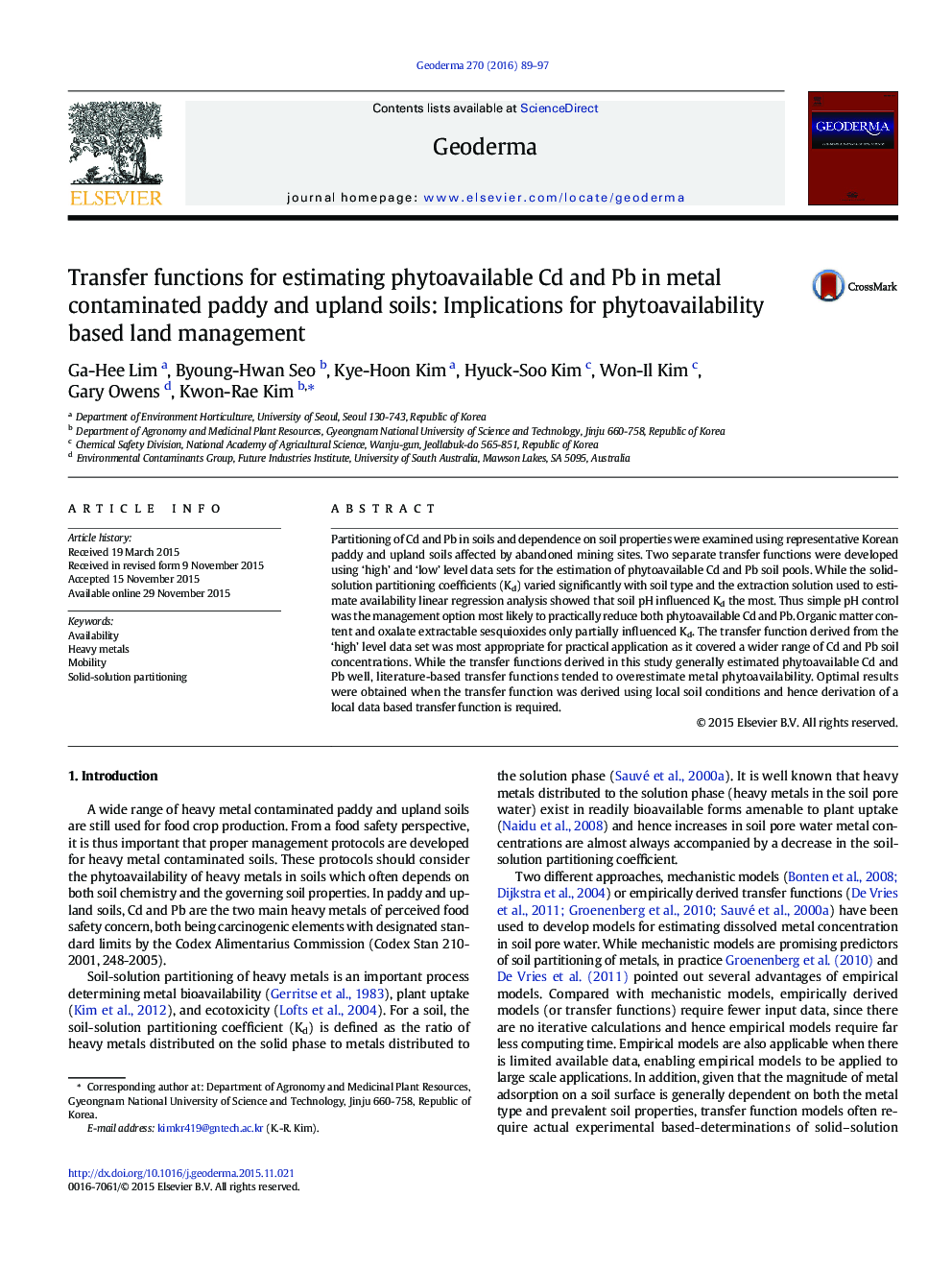| Article ID | Journal | Published Year | Pages | File Type |
|---|---|---|---|---|
| 4572961 | Geoderma | 2016 | 9 Pages |
•Transfer functions (TFs) were derived to estimate phytoavailable Cd and Pb in soils.•For this, 120 paddy and 29 upland soils affected by metal mine sites were examined.•Soil pH was the main independent factor governing Cd and Pb phytoavailability.•TFs derived from a ‘high’ level data set estimated phytoavailable Cd and Pb well.•For optimal estimation, local data based TFs with a consistent extraction method is required.
Partitioning of Cd and Pb in soils and dependence on soil properties were examined using representative Korean paddy and upland soils affected by abandoned mining sites. Two separate transfer functions were developed using ‘high’ and ‘low’ level data sets for the estimation of phytoavailable Cd and Pb soil pools. While the solid-solution partitioning coefficients (Kd) varied significantly with soil type and the extraction solution used to estimate availability linear regression analysis showed that soil pH influenced Kd the most. Thus simple pH control was the management option most likely to practically reduce both phytoavailable Cd and Pb. Organic matter content and oxalate extractable sesquioxides only partially influenced Kd. The transfer function derived from the ‘high’ level data set was most appropriate for practical application as it covered a wider range of Cd and Pb soil concentrations. While the transfer functions derived in this study generally estimated phytoavailable Cd and Pb well, literature-based transfer functions tended to overestimate metal phytoavailability. Optimal results were obtained when the transfer function was derived using local soil conditions and hence derivation of a local data based transfer function is required.
